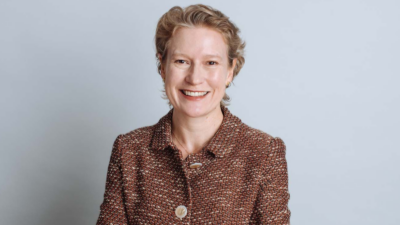Andrea Slattery steps back but legacy remains
by Greg Bright
She will be a hard act to follow. Not since the late Mavis Robertson has an industry association’s chief executive had such an impact – such an impact on such an important industry. It is difficult to imagine, but Andrea Slattery is leaving the building.
The SMSF Association founder and chief executive of 14 years announced her move into semi-retirement last Thursday. From May, she will be replaced by John Maroney, an experienced association head himself, having led one of the precursor groups that became the FSC, the Life Investment and Superannuation Association, as well as the prestigious Institute of Actuaries in Australia.
But Slattery will be returning regularly to the building – in this case SMSF House in Adelaide – for board meetings. She remains a director and will be seeking other directorships and committee memberships at both within the industry and governmental levels.
Like Mavis, who was urged on by Garry Weaven in the late 1980s to form CMSF and then what became its parent, AIST, when the industry fund movement was gathering momentum, Andrea had her supporting co-founders.
At her press conference in Sydney, she attributed the Association’s success to many people – such as directors, staff and enthusiastic members – but especially to the foresight of the four co-founders: Peter Fry, Nick Aston, Peter Nicholson and Brian Williams. They each lent the association $5,000 and found Andrea a “cupboard” of a room from which to work.
In 2003 the SMSF sector consisted of 262,000 funds totalling $109 billion. Today it is 581,000 funds totalling $636 billion. It has gone from being the smallest, and probably most politically vulnerable, of the three industry sectors (not-for-profits – including public sector and corporates – retail and SMSFs) to the largest. No government would be brave enough now to take on SMSFs’ 1.1 million trustees in a major stoush.
Slattery recalled, last week, some defining moments in the Association’s contribution to the sector’s growth.
There were some nervous times, under governments of both persuasion, such as the perennial question as to whether there should be a minimum account balance in place before individuals could be permitted to start an SMSF.
In 2005, under the Howard Government, she said the Association managed to get some legislative barriers removed which would hamper growth, and with both the Cooper and Murray reviews, the Association was able to come out the other side of each inquiry with a positive report card for the sector.
Slattery said that the Cooper Review, in 2007, which was designed to look at efficiency, was initially not seen as having much to do with SMSFs. She was able to get a spot on the committee for an SMSF representative. “It was the first time we had a seat at the table,” she said.
With the Murray Review in 2015, whose remit included looking at limited recourse borrowing by SMSFs, Slattery said the organisation was the “only one that got 100 per cent of what we asked for”.
The announcement of her retirement and Maroney’s appointment was hurried – having been decided less than two weeks ago, chairman Andrew Gale said – because of the upcoming annual conference next week. Slattery and the board did not want to see the event being overshadowed by her news.
Maroney has been living in Switzerland since 2009, where he is head of capital and solvency at the International Association of Insurance Supervisors. He will attend the conference and then return to Switzerland to pack his things before moving to Adelaide.
“It’s really hard to leave something I really love,” Andrea said. “When it’s your baby… I grew it. It’s been an 80-90-hour a week passion. And I wasn’t going to leave it to someone who I didn’t think could do a really good job… I will leave at the top and leave a legacy, hopefully.”









